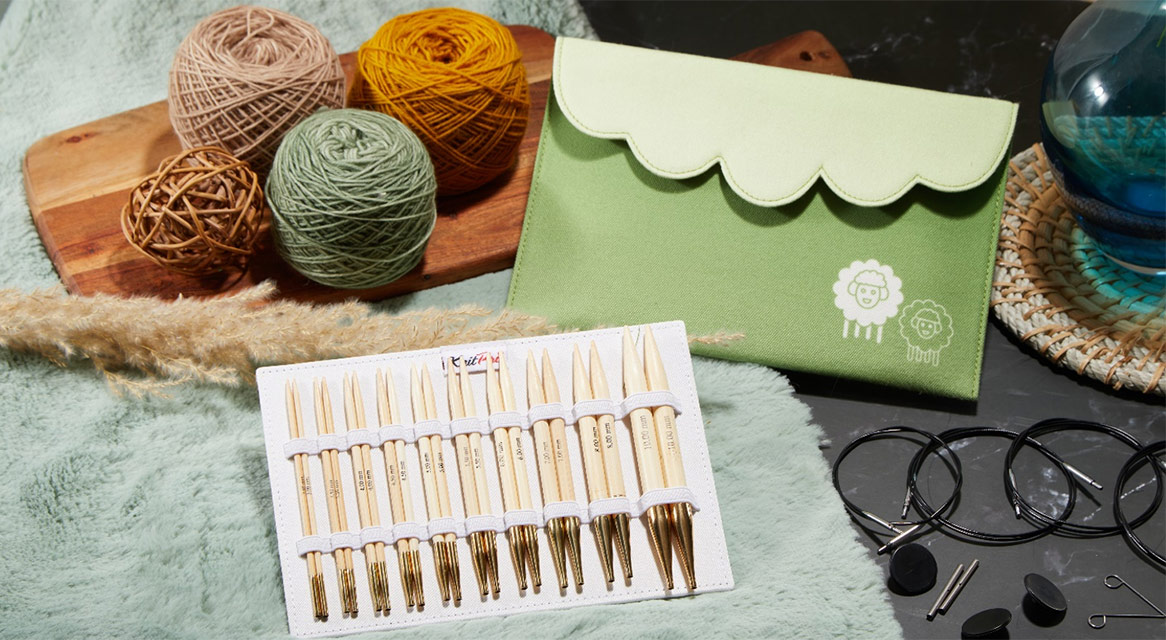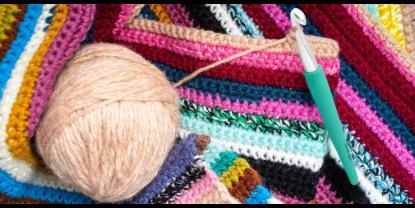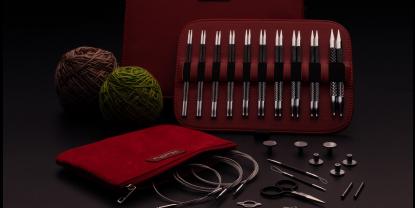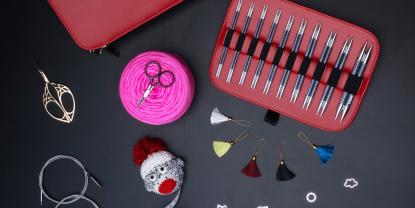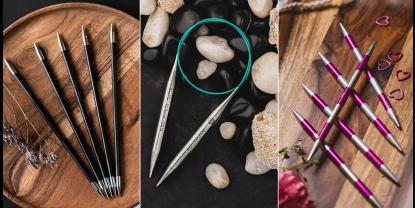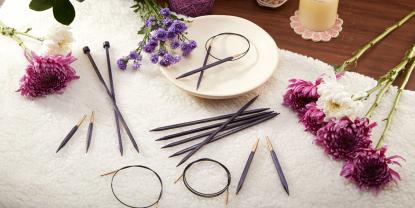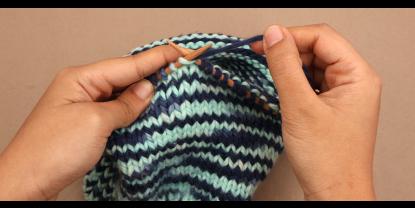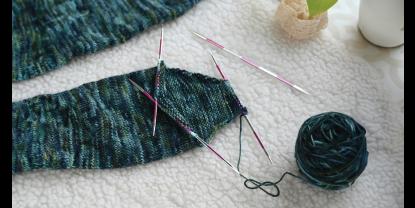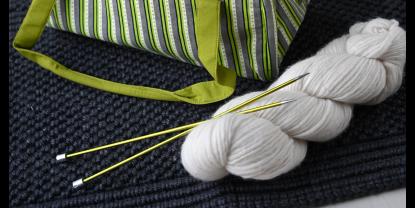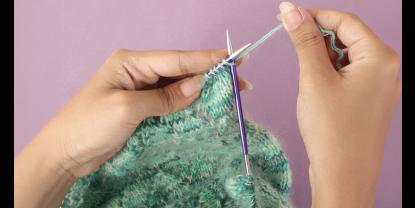Your lovingly knitted projects are your expression of creativity and hard work. Any damage to these delicate stitches is heartbreaking. With use and time, many knitted garments especially the elbows of a sweater or garments, collars, and heels of socks frays and even holes appear in the fabric. The holes need to be fixed before they grow and make the fabric unusable. It is time to explore the many knitting repair techniques. Even after a project is off your knitting needles, there are many ways to mend the projects. In this blog, we’ll walk you through the technique of visible mending any knitted fabric with duplicate stitches.
What is Visible Mending?
Visible mending is an old art form. From the first knit sweaters for the fishermen at sea, mending has been a process to keep knitwear functional. It’s the ultimate way to make sustainable choices and be a part of the slow fashion of handmade garments and accessories. While mending can be done invisibly too, showing off with visible effects is a beautiful art. Visible mending is a great answer on how to fix holes in knitted sweaters and other projects. Refer to our blog on knitting tricks to fix unwanted holes when the project is still on your knitting needles.
Mending means ensuring that frayed stitches are secured and new stitches strengthen the fabric while adding to the beauty. This can be done in various ways, however, the most common method is called "darning". Darning is a broad term for repair work on a fabric with a needle. In this blog, we’ll solely be focusing on Swiss darning also known as duplicate stitches. This only needs a darning needle, also known as a wool needle and finishing needle. In the olden days, every knitter or maker owned a darning egg or darning mushroom that held the fabric taut while darning.
How Swiss Darning or Duplicate Stitches works for mending?
Duplicate stitches are a form of embroidery that can be easily worked on fabric as well as your knitted and crocheted fabric. To work these stitches, you do not require knitting needles or crochet hooks but your finishing needles also known as darning and wool needles.
The duplicate stitch technique gets its name because of the way the stitches are worked. The stitch follows the path of the stitch (garter or stockinette pattern) and duplicates the path of the underlying knitting. The duplicated stitches serve various purposes in a knitting project, majorly adding to the utility and the beauty.
Working another strand of yarn into already knitted stitches thickens and stiffens the fabric. With this trick, a worn fabric for example a dearly-loved and used sock heel or elbows of a sweater can be mended and used to strengthen the fabric.
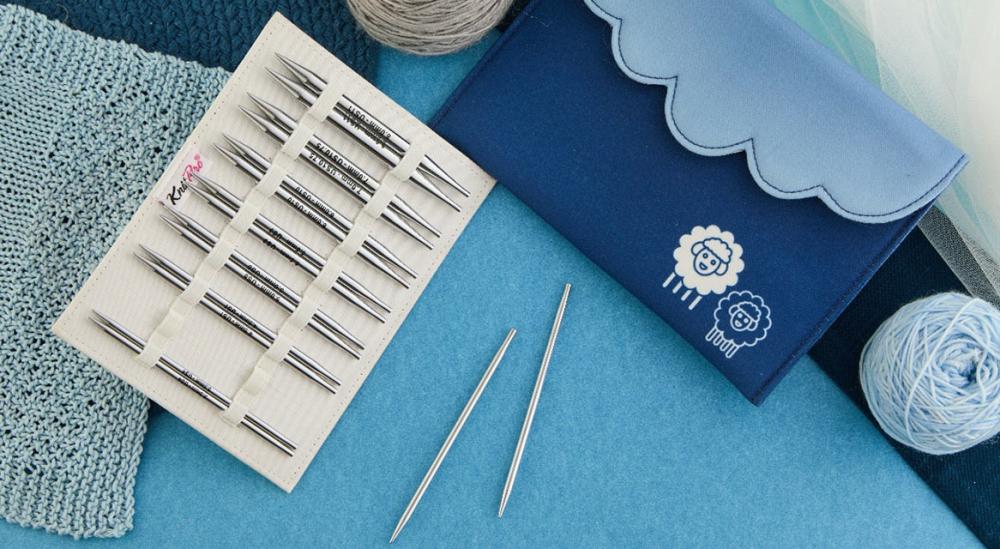
How-to Make Duplicate Stitches
After you’ve finished your knitted fabric and the project is of your knitting needles, thread your yarn through the finishing needle. Whether you use single-pointed needles or double points or work with circulars, you can work duplicate stitches as the knitted fabric made by any of the needles are same. Make sure that the finishing needle should be a size smaller than the knitting needle used for making the fabric. This is the same for crochet too.
Step 1 - Draw up the needle from the back of the knitted fabric and go through the same path of the stitch below. If it's a reversible pattern make sure to start from the seam or go as invisibly as possible making the stitches on the front side (RS) of the project. Your needle should enter from front to back in the base of the V and exit through the center of the stitch above. Come back down through the base of the same V you started with. The path should exactly mimic the original knit stitch.
Step 2 - Gently snug up each duplicate stitch and yet leave plenty of yarn on the fabric surface. This will reduce the chance of the underlying color peeping through as well as avoid the problem of collapsing the fabric with tight stitches.
Handy tricks for smooth Visible Mending with Duplicate Stitches
-
Make a half stitch. Knitted stitches form a V. To make a half stitch take the needle through the legs of the V. This little trick helps smoothens out the curves, reducing the pixelated stair-step appearance. This trick works best in colorwork patterns. But then the stiff knitted fabric is not preferred by knitters who are experts in all types of colorwork knitting.
-
Choose a needle size larger than the knitting needle or crochet hook size.
-
Use the same yarn weight as the original piece or a yarn weight thicker than used in the pattern.
-
Keep a check on tension Control. Yarn tension slightly looser than the base fabric will not allow the stitches to be mended while pulling too tight will cause puckering. The duplicate stitch should lay flat against the base fabric without distorting it.
-
Always take the shortest route to make duplicate stitches so that can reduce the bulkiness added to the fabric.
-
Go row-wise or column-wise. This depends on the effect you would want the stitches to have to point up or down. Also, the direction can be determined by the purpose, whether it's for utility or adding to the beauty. In case, you are following a knitting pattern, you will have the exact instructions.
Besides mending, duplicate stitches can be used for decoration. Another way the stitch technique is used is to weave in yarn ends. This also works wonderfully for projects to introduce different yarn colors.
Decorating & Adding to the Beauty with Duplicate Stitches
The second use of duplicate stitches is on a perfectly sound fabric to add color decoration. Naturally, this uses overlap. You can easily make alphabets or images and other patterns. Here using a contrasting yarn shade is not a big problem. Here you can choose a finishing needle and yarn bigger than the knitting needle and yarn used in the project.
To combine utility with decoration, a colorful flower worked over a thinning elbow or sock heel, or a little heart over a moth hole is a wonderful option.
With this guide, get ready to make duplicate stitches in knitting. Be it the purpose of utility or adding to the beauty, these stitches are of great help. Just make sure to work with a round-tip finishing needle that goes easily through the stitches and fabric.
Video Courtesy - Staci Perry | YouTube Channel - @verypinkknits


